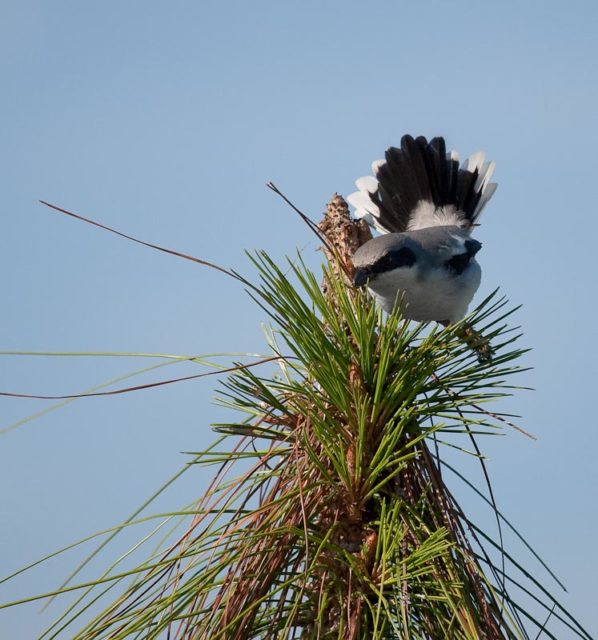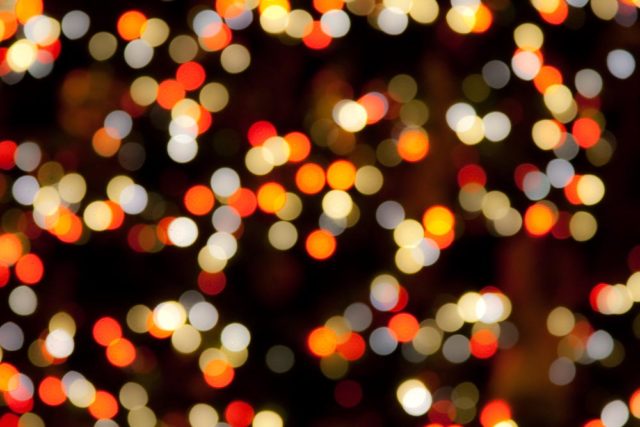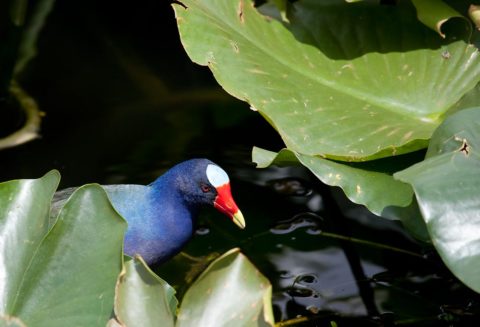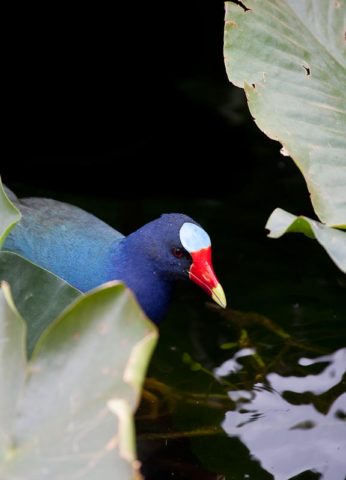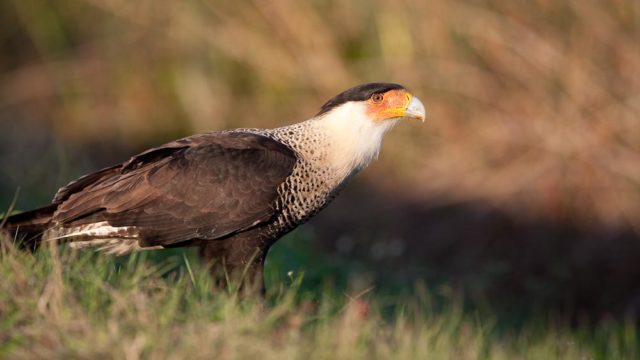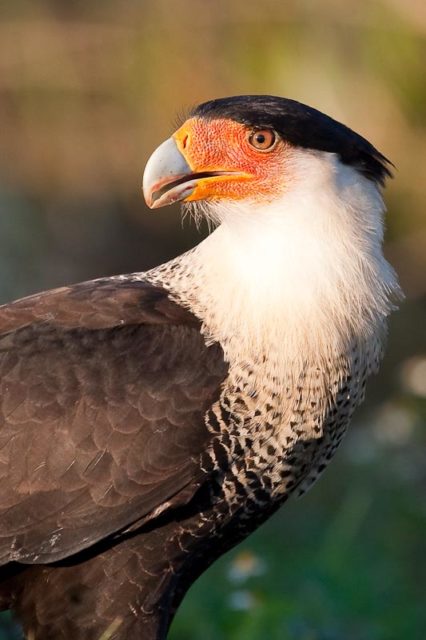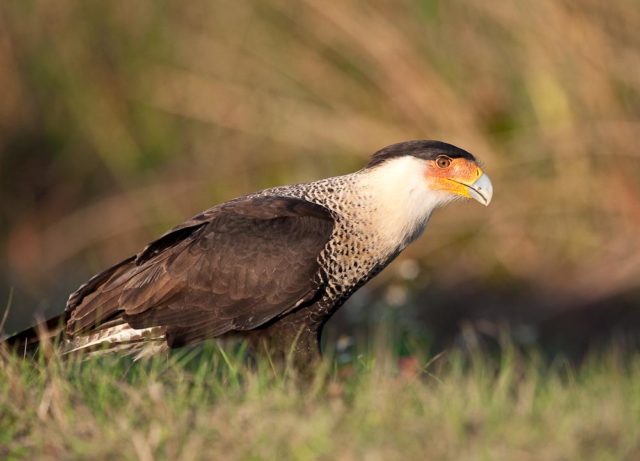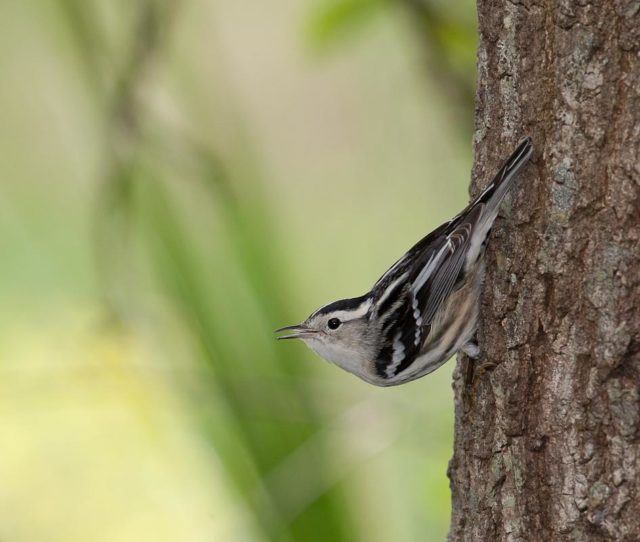
This has not been my year for bird photography. In January my long lens broke and following that my main camera spent a week at Canon being worked on. That said, this has certainly been the year for birding, unlike last year which was just depressingly bad. Wakodahatchee Wetlands, one of my local birding spots has been hopping since early January and I’ve been without the glass to shoot it.
That said, on Wednesday the 24th, I made it back to Wakodahatchee though certainly not at the ideal time, mid-day. However, there was still a few good shots to be had and lots of clouds didn’t hurt the light either.
The highlight of the day was a Purple Gallinule foraging in Spatterdock and Pickerel Weed along the boardwalk shown here.
The start of 2010 looked like it was headed towards being the quarter of destruction. As I wrote about previously, I managed to break my 100-400. I also picked up a new EF 24-70 f/2.8L USM, only the first copy wouldn’t focus consistently on any camera I put it on, so back it went to B&H.
I have to plug B&H Photo out of NYC here for a second; I buy almost all my gear though them, mostly due to their fabulous customer support. The few times I’ve had a problem with something, they’ve been amazingly quick to take care of me, from short hold times when calling customer service to painless returns and exchanges.
Anyway, the second copy of the 24-70 arrived and this time while focusing fine on my 40D, was still all over the place on my 1D Mark 3, a strong indicator that this time it wasn’t the lens, but the camera.
Now the 1D-3 has a bit of a reputation for being a little fast and loose with its definition of focused. Even since the initial defect was corrected, there’s still some debate over whether the AF was actually fixed. Some photographers still insist that the OOF rate is higher than it should be; others never had a problem to start with. Personally, I never saw a problem until the 24-70/2.8.
The odd thing to me is that slower lenses have always been spot on. Even when the actual depth of field wasn’t all that large in physical terms, like when shooting a 400mm lens at f/5.6 with a rather short subject distance.
With the second lens a no-go on the 1D, it was time for the 1D to go back to Canon for a checkup.
Since the 1D Mark 3 has had focusing issues, Canon has a standing service bulletin that 1D (and 1Ds mark 3) users can have their camera’s AF checked out and repaired as a courtesy from Canon, in other words for free.
I can’t say I was happy about having a problem, but at least Canon is taking care of their customers.
Now I’ve sent exactly 2 things to Canon for service, my 1D and an EF 28-135 lens some years back. In both cases, I’ve been absolutely floored by the speed and responsiveness from Canon. Especially after hearing the problems a friend has been having getting Nikon to fix a clearly malfunctioning battery grip.
In this case, my camera was out of my hands for service for a whopping 7 days. Was overnighted on a Tuesday; Fedex dropped it off the following Tuesday. I actually got the camera back before I got the letter from Canon explaining that they received the camera and were going to repair it.
Was it fixed? Everything so far says yes.
While I still haven’t redeveloped the confidence in the camera that I use to have, that’s just going to take some time. I haven’t had any blatantly out of focus images from it yet though and that’s a good sign.
While I may have, a long list of complains about Canon’s pricing and design decisions, never mind the recently slipping in image quality relative to Nikon, and occasionally have even consider switching. The people that deal with the worst part of photography, having broken gear, have performed as well if not better than I could ask for and I’m not even a CPS member.
So atta-boy Canon USA, thanks for the speedy job.
I’ve been a bit remiss getting to this post, since I’ve had the lens back for a couple of weeks now. Anyway, here it goes.
A few weeks back I reported that my 100-400 suffered from a problem common to the EF 100-400 f/4.5-5.6L, the zoom clutch failed.
…the first indication of a problem is that you begin to see bits of black stuff stuck to your lens barrel…
For those who’ve never had this happen to them the first indication of a problem is that you begin to see bits of black stuff stuck to your lens barrel between the 100 and 135mm marks. This is actually part of the locking mechanism breaking down.
If you start seeing this, I’d suggest having the lens looked at, since it’s likely going to be much cheaper to have the clutch rebuilt without having to replace the lens barrel too. However, mine operated in that state, leaving bits of black stuff on the lens barrel for 6 months or more without any other indication of a problem. In my case I didn’t realize what was going on until the clutch failed completely and in doing so damaged the lens’s outer barrel prompting another expense to be added to the repair bill.
Being that my 100-400 was long out of warranty—and quite frankly the warranty period for Canon’s lenses, especially the L ones are in some ways obscene, but that’s another story—I elected to take the lens to a local Canon authorized shop instead of shipping it off to Canon. The center I choose, Southern Photo Technical Service, came highly recommended by several local photojournalists that I know. Doing so certainly saved me from paying for shipping. Even better, the quality of their work seems to be every bit as good as people told me it would be. Of course, these guys are building beefed up Nikon D3Ses that have custom designed shutters and tweaked AF algorithms so that has to say something about their skills.
expect to spend at least $250 if the zoom clutch fails completely
For my lens, the repair ran about $275 and took 2 weeks. It likely would have been even more inexpensive if I had known what was going on and had the clutch taken care of sooner.
I have no idea how the turnaround time compared to having Canon do the work. On one hand I didn’t have to ship the lens, so the work was started faster; on the other, Southern Photo had to order parts and that took some time. That said, Canon’s service center (at least the New Jersey one) has been very quick in the few instances I’ve had stuff go back to them. I’m betting that the time was a wash either way.
The lesson to take away from this:
- Be very careful with your EF 100-400, especially in dirty or dusty environments. Dirt and sand can get in the clutch, and I think that was what started mine going down the drain. In addition, I’d probably stay away from really tightening down the zoom lock; enough to be snug but no more since that could also contribute to forcing the material to adhere to the lens barrel.
- There are no home remedies for this problem; it needs to be addressed of by a service center. Even being extremely careful isn’t necessarily going to save you. My 100-400 that failed is always kept clean, and wiped down with a slightly-damp soft-cloth after almost every use. It still broke.
- When something seems a bit odd, it might be a good idea to have it looked at. In this case, when the clutch fails completely it can damage the lens barrel necessitating another part being replaced.
- Canon really needs to release a new 100-400 (yes even after this it’s still my favorite long lens) that is better engineered to not fail like this. Though I’d still prefer a push-pull zoom than a ring controlled zoom, at least at this focal length range.
- If you’re out of warranty, and even if your gear is under warranty and you’re in the South Florida area, Southern Photo Technical Service may be a good solution for getting something fixed quickly. It doesn’t hurt that there a factory authorized service center for just about every major camera manufacturer. For example, they did a rush shutter replacement on a D2H (luckily they had the part) for a friend of mine in under 24 hours.
Christmas saw the acquisition of a Canon TC-80N3 timer remote, it’s capable of being programmed to produce long exposure and time lapse captures with intervals as short as 1 second. This was my first time running a time lapse and I think I learned a few things from it, but I’ll save that story for another time. In the meantime, here’s my first attempt at a time-lapse video.
The video is made form nearly 800 frames shot over almost an hour at 5 second intervals.
Canon’s 100-400 maybe isn’t the best-built lens, the push pull design makes the bearings and zoom lock prone to picking up sand or dust from the lens’s body. However, it is one of my favorites. I actually like the push pull zoom for a lens of the range, and my copy is very sharp.
However, for me the biggest advantage of the 100-400 is that it’s nearly identical in size to a 70-200 f/2.8. That makes it easy for me to size my bags and pack my gear; need speed take a 70-200, need reach take a 100-400.
Unfortunately, the 100-400 has a well-known tendency to suffer from failures in the zoom mechanism.
This is just what happened to me this morning at the BirdPhotographers.net meet up. Kicking the morning off and everything is running great; the lens is smooth as butter. Walk around a couple of times, and go to adjust the zoom position and bam, zoom won’t slide, zoom lock ring is stuck, and the focus ring is stiff and feels like there’s grit in it.
Hopefully the fix won’t be as expensive as I fear it will be.
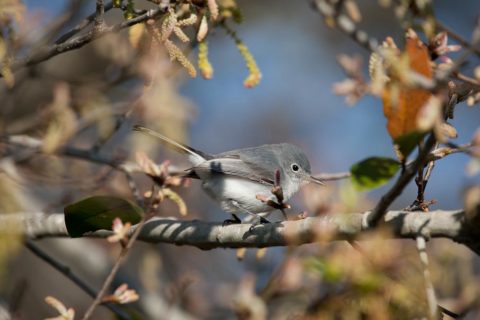
If you use the camera enough, you’ll end up memorizing them without doing anything at all
It’s often suggested that memorizing the aperture number sequence is something photographers should do. Unfortunately, the people proffering this never seem to be able to articulate why all that well. If it’s such a good idea, shouldn’t it be easy to point out how beneficial it is?
When someone tells me, I should do something; in a way, it’s a sales pitch. The product is the idea, in this case memorizing the f-numbers. The price is some of my free time. The payoff is whatever the benefits of doing the thing are.
I don’t think I’m alone when I say I have a limited amount free time; that makes my free time valuable. Therefore, I think it’s reasonable to expect someone presenting an idea to actually be able to convince me of its merit.
If you know the f-numbers you can adjust the exposure more quickly, for example, if you know f/5.6 allows twice as much light as f/8 you know you have to change your shutter speed from 1/60th to 1/30th.
Not very much of an argument is it?
Even worse, I’d say the way it’s presented is a bit disingenuous. Those full stops make everything nice and easy; substitute f/7.1 and f/3.2 and it’s not so easy anymore. Doing that also makes it apparent that you need to memorize more than just the whole stops which is often the only thing mentioned by the proponents.
Since what needs to be remembered is already snowballing, why stop there? Why not memorize the shutter and ISO speeds too?
Moreover, you don’t adjust exposure settings in a vacuum. You do it with a camera and cameras provide several solutions that involve no memorization at all. In fact, 3 technologies come to mind that have largely render memorizing f-numbers unnecessary.
- Auto Exposure
- The Meter
- Click-stops at each setting
Even if we ignore the first two, you can easily keep the exposure the same by changing the shutter’s value by the same number of clicks as the aperture’s. In fact, coupled with the camera’s meter after a while it becomes so second nature you just do it.
However, I think the most damning reason not invest any time on this is simple; if you use the camera enough, you’ll end up memorizing them without doing anything at all. Off the top of my head, I can recite most apertures, shutter speeds and ISOs in 1/3-stop increment and I never actually spent a minute trying to memorize them. Just seeing them in the viewfinder enough times was all it took.
I’m willing to take this a step further, I don’t think think it’s necessary for most photographers to understand how the f-number is derived at all; there’s simply nothing intrinsically useful about it for most photography.
However, what is important is understanding how the aperture affects the image and that equal f-stops pass the same amount of light regardless of the focal length. The former, is important for controlling creative aspects of the image, in other words, depth of field. The latter tells us that if an exposure is 1/60th f/4 ISO 100, it will be the same regardless of whether the lens is 10mm or 1000mm.
My advice, if you want to spend time doing anything, practice handing your camera and changing lenses. Being able to change settings without thinking about where the controls are can have a massive positive impact on all of your photography simply by letting you get shots you otherwise would have missed. Being able to change lenses quickly can help keep dust off your sensor as well as keeping you shooting so you don’t miss the critical moments. Either way, there’s no substitute for familiarity and practice when handling your camera in the field.
These are a few frames of one of Florida’s Crested Caracaras from my time at Viera Wetlands in early December. This individual photographed while feeding on a fish found on the side of the levee.
The Crested Carcara is a ground-inhabiting bird of prey that is closely related to Falcons. It’s found primarily in open habitats like grasslands, scrub deserts and seashores.
The Florida population has been isolated from the rest of the Caracara range (most of South and Central America) since the end of the last ice age. In Florida its range extends throughout Okeechobee, Osceola, Highlands, Glades, Polk, Indian River, St. Lucie, Hardee, DeSoto, Bervard, Collier and Martain counties.
Caracaras, like other raptors, are opportunistic and will eat carrion, steal food from other birds, and hunt for small most other small prey items. However, unlike vultures, Caracaras will almost always avoid rotting carrion. The individual photographed here had managed to find an fairly fresh fish (or possibly run off another bird for it’s fish) on the side of one of the trails embankments.
Crested Caracara populations have been declining due to loss of habitat due to development for some time. The Audubon’s Crested Caracara is listed on the U.S. Endangered Species List and the Florida populations considered a threatened. The Florida populations face uncertain futures since the majority of the land in it’s range is privately owned, and thus not under Federal protection.
- Crested Caracara, eNature.com
- Northern Caracara, Wikipedia.com
Seasons Greetings and Merry Christmas from Points in Focus.
